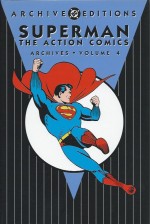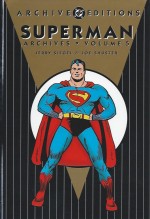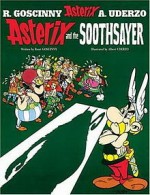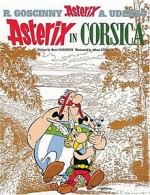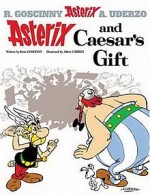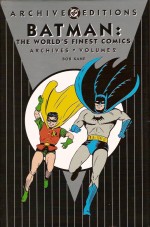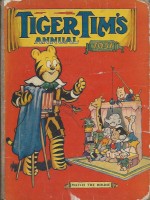
By various (the Amalgamated Press)
No ISBN
Feeling particularly nostalgic and wistful over the sad news about The Dandy’s imminent departure/transfiguration from the realm of newsprint, I’m going to look at a book from the era ofBritain’s comics heyday.
Normally I’d review graphic novels and trade paperback collections with a view to the reader and potential purchaser hopefully becoming a fan or even addict of the picture-strip medium. Here though, I’m simply applying modern critical sensibilities to one of the landmark items and indeed, an entire genre of pictorial edification which seems forever lost; permanently removed from the contemporary cultural scene.
If, however, you’re lucky enough to stumble across a copy or indeed any similar vintage volume, I hope my words convince you to acquire it. As ever, my real purpose and sinister scheme is to create a groundswell or even a little ripple in the entertainment ether, since I’m back on my high and wide horse about the paucity of classic vintage strips, stories and comics material available to the young and older readers of the 21st century.
So much magical material is out there in print limbo. Great writing and art is rotting in boxes and attics or the archives of publishing houses, when it needs to be back in the hands of happy punters once again. On one level the tastes of the public have never been more catholic than today and a sampling of our popular heritage will always appeal to some part of the mass consumer base.
Let’s make copyright owners aware that there’s money to be made – not loads, admittedly, but some – from these slices of our childhood, and modern technology has never been more adept at capturing, preserving and disseminating these lost and disintegrating classics…
yourgrandadscomics.org – if we build it, they will come…
Tiger Tim’s Annual 1951 was released by The Amalgamated Press in 1950 (the dating was year-forward on these colourful, bumper, hard-backed premium editions so the book would have been released in the Autumn intended as a Christmas staple) with the 1948 London Games (if not Sir Ludwig Guttman’s largely unknown International Wheelchair Games – which grew into the Paralympics of today) an already fading memory. The people’s thoughts were already turning to the upcoming Festival of Britain and the perennial rumours that rationing would be eased – if not ended.
For kids, radio, comics and being outside in the fresh air were the order of the day. DC Thomson’s exuberant and anarchic stable of titles were still the favourites, although new high class entry the Eagle was increasingly dictating the way things should and could be done.
Although far less open to change, Alfred Harmsworth’s Amalgamated Press was the other prolific powerhouse purveyor of children’s papers, with a pedigree that stretched back to the end of the 19th century and a stranglehold on syndicated and licensed characters (especially film and radio stars) which kept well-intentioned, nostalgic parents coming back for more…
Their undisputed super-star was the phenomenally popular Tiger Tim and his gang of chums The Bruin Boys (Jumbo Elephant, Willie Ostrich, Georgie Giraffe, Bobby Bruin, Jacko Monkey, Joey Parrot, Porkyboy Pig and Fido Pup) who all spent their days learning to be civilised at Mrs Bruin’s Boarding School, originally rendered by Julius Stafford Baker but eventually to grow into a multi-artist enterprise encompassing many of the country’s greatest – if uncelebrated – artists.
Tim had first appeared in Harmsworth’s Daily Mirror in 1904, and graduated in 1909 to the weekly Playbox supplement for children in ‘The World and His Wife’.
The Rainbow weekly colour comic began in February 1914 and Tim was the cover feature until its demise in 1956. In 1919 Tiger Tim’s Weekly (née Tales) also launched and he had been the star of his own annual since 1921 (first one dated 1922 – got it now?). At a time when merchandising deals for children’s features were in their infancy,
the characters were so popular that Britains – the toy soldier manufacturers – launched a line of lead figures to sell alongside their more militaristic and farm animal fare.
In this twilight years album, the line-up as ever includes not only the anthropomorphic Tim and Co. (with five strip prose stories and a magical double page cartoon spread) but also a number of general features (prose and strip), fact pieces and many puzzles and games for its young readership to keep the nippers engrossed – and quiet – for hours…
One more thing and an admittedly shameful one: when this book was released, our views of other races and cultures ranged from the patronisingly parochial to the outrageously insular to the smugly intolerable and unforgivable.
As with every aspect of British – Hell, all “White Culture†– there was an implicit assumption of racial superiority – notwithstanding the fact that every empire is built on multi-nationality; and even within living memory WWII could not have been won by white warriors alone.
Which brings us head-on into the arena of ethnic stereotyping. All I can say is what I always do: the times were different. Mercifully we’ve moved beyond the obvious institutionalised iniquities of casual racism and sexism and are much more tolerant today (unless you’re obese, gay, a smoker, a liberal, or childless and happy about it), but if antiquated attitudes and caricaturing might offend you, don’t read old comics – it’s your choice and your loss.
Moreover, the class and even regional differences underpinning this entire era are far more dangerous – just look at Sexton Blake and Tinker or middleclass educated Dan Dare and his canny, competent but ultimately comedic “Ee baih gum, sidekick†Digby…
Historic portrayals and inclusions of other races have always and will always be controversial and potentially offensive from our contemporary standpoint, and we have thankfully moved on since those ignorant times. It’s not really even an excuse to say, at least in our post-war comics, that baddies were mostly our own kind and differently-hued cultures were generally friendly, noble savages not trying to eat us…
Nor will this diversion ameliorate the shock of an illustrated song at the back of this particular book: I’m saying nothing now but By Crikey you’ll know when we get to it…
This 1950’s annual begins in traditional manner: following a stunning painted frontispiece for an adventure story at the back, Tim’s terrors kick off proceedings with ‘The Fancy Dress Show’ – a prose romp wherein the mischievous scholars are themselves pranked.
All the strips in the Annual are of the traditional “block-&-pic†sort with a progression of beautifully rendered drawings in panels accompanied by a paragraph of typeset words, and the ‘Lazy Prince’ delightfully depicts the tale of a Baker’s boy who trades places with the bored heir to the throne after which bear-cub ‘Mickey Mischief’ got into hot water and other ingredients in the kitchen…
Illustrated poem ‘Runaway Oranges’ is followed by ‘The Best Sort of Capstick’, a story of a poorly-dressed Prince, rounded off by half-page strip ‘Funny Dobbin’ after which the partially-coloured portion of the book opens with a quartet of pixie-like lads and their pet pig in the strip ‘The Brownie Boys and Old King Cole’.
After an illustrated spread featuring the Bruin Boys and the other stars of the book at ‘The School Play’ and ‘The Tree-Top Tuck-Shop Man’ (illustrated by the magnificent S.J. Cash), three little piggies got ‘In a Tangle’ and F. L. Cromptoy(?) depicted the toy cinema story ‘Half-Price day for Dollies’ before it was back to prose for ‘Plucky Frank Saves the Old Windmill’.
Herbert Foxwell was the star illustrator on Tim’s adventures and he probably also limned the prose piece ‘Striped Paint – a Father Christmas Mystery’ after which the anonymous strip ‘A Message from Castle Grim’ found young Robin Hood rescuing ten-year old Maid Marian from a dungeon whilst ‘Flippy to the Rescue’ described the fate of a talking plane who proved he wasn’t too old to fly.
The half-page strip ‘Clever Spot’ is followed by a stylish retelling of ‘There Was an Old Woman (Who Lived in a Shoe)’ and the picture strip ‘Sunshade Ships’ with ingenious kittens The Tibbles helping out after a flood before the ‘Bruin Boy Band’ leads to a lot of noise about who ate all the pies…
Games and puzzles were a big part of the Annual experience and ‘Dolly’s Birthday’ combines strip-thrills and compelling conundrums in one, after which the text drama ‘Enter Two Professors’ features impostors and high jinks at Deepwell School.
‘Fairy Folk Tree’ is another illustrated rhyme courtesy of M. Newhouse whilst ‘The Brownie Boys of Dr. Acorn’s School’ tried to re-enact the events of the Cat and the Fiddle with the usual outcome after which puzzle-strip ‘The Lost Princess’ combined epic adventure with a series of tests for the readers and ‘Comical Crackers’ found Tiger Tim and Chums swapping a few japes and Christmas games of their own.
‘A Short Poem about a Long Dog’ is followed by a glorious animal excursion in ‘The Regatta’ by Cowell, whilst text-wise Peter the Page got into big trouble with ‘The Wizard’s Hat’ and mean Mr. Miggley-Moley learned too late the benefits of sharing ‘A House Underground’ in a truly splendid two-colour strip.
Professor Snook became ‘The Stay-at-Home Explorer’ in a rhyming saga, and fear of the dark unnecessarily afflicted ‘The Brownie Boys of Dr. Acorn’s School’ before Tim and the Boys went on holiday in ‘Hurrah for the Seaside!’ and ‘Puzzle Pantomimes’ led into a bold rescue mission for a little girl in the strip ‘Molly’s Redskin Chum’.
King Dandy was compelled to extreme measures to remove unwelcome familial squatter Count Crunch in the text tale ‘Camping Out!’– hilariously illustrated by R. Payton – before those three piggies returned to transform their homemade aeroplane into a ‘Flying Clothes Line’.
There was old-fashioned pirate peril for young Jack Ready when the valiant “Ship’s Powder-monkey†was aided by a furry-tailed young gallant on ‘Monkey Island’ whilst, after ‘A Funny “Tail†of Christmas Eve’, the Chinese lad Ting-a-Ling learned the power of ‘The Magic Ring’, a prose tale capped off with a two-panel strip about Old Mother Hubbard‘s dog.
‘Tubby Enjoys a Joke as much as a Feast’ revelled in the hoary delights of japes and food parcels from home, after which ‘The Brownie Boys of Dr. Acorn’s School’ were lost in a nautical dream and the cleverest and greediest of the Bruin Boys stunned everybody by admitting ‘Porky Likes Work!’
‘Funny Jokes on Parade’ is followed by a strip concerning a poor working lad and a ‘Lucky Book’ after which impoverished King Popcorn regrets ‘The Royal Spring-Clean’ but still reaps a happy reward.
The book proper ends with that illustrated sing-along page so brace yourself and remember “context is everything†for ‘All Aboard for Darkietown’ before dashing on to the closing letter from the feline star in ‘Greetings to all from Tiger Tim’ and an ad for Rainbow and Playbox. The back cover is also an advert – for Cadbury’s Bourneville Cocoa – cunningly disguised as a maze for the kids to solve.
Children’s staples such as detective mysteries, school stories, sea-faring adventures, westerns past and present with studied additions to myths, fairy-tales and pantomime stories were always the bread and butter of these books, all trauma-free yarns meant to thrill while creating a love of reading.
What they considered age-appropriate children’s content might raise a few eyebrows these days. Popular fiction from a populist publisher will always embody some underlying assumptions unpalatable to some modern readers, but good taste was always a watchword when producing work for younger children, and some interactions between white children and other races is a little utopian, perhaps. The more insidious problem as I’ve already suggested arises from the accepted class-structures in some of the stories and the woefully un-PC sexism throughout.
None of this detracts one jot from the sheer creative power of the artists involved, and all we can hope for is that the reader uses judgement and perspective when viewing or revisiting material this old. Just remember Thomas Jefferson kept slaves, it’s only been unacceptable to beat your wife since the 1980’s, and in some areas even today people who die in police custody apparently only have themselves to blame…
So before I go off on another one or get on to another government watch list, let’s return to the subject at hand and say that despite all the restrictions and codicils this is a beautiful piece of children’s entertainment in the time-honoured fashion of Enid Blyton, Dodie Smith and Arthur Ransome, with lovely illustrations that would make any artist weep with envy.
You and your kids deserve the chance to see it for yourself.
© 1950 The Amalgamated Press.
Which I’m assuming is now part of IPC Ltd., so © 2012 IPC Ltd.



